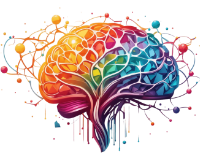“`html
Summary: Disclosing the use of generative AI, whether for research or composition, is a critical ethical consideration as these tools become more embedded in our professional and personal tasks. In this post, we’ll examine when disclosure is wise, how educators can guide students toward responsible AI usage, and whether AI’s benefits outweigh its dangers in the classroom.
Distinguishing Research from Composition: The First Ethical Test
The decision to disclose your use of generative AI begins with one simple distinction: are you using AI for research or for actual composition? If you rely on AI tools like ChatGPT or others as a research assistant—think of it as a brainstorming partner or an encyclopedia—it’s likely unnecessary to disclose this. The ethical stakes are minimal because the final product is your own creation.
That said, even when using AI for research, accuracy should be your non-negotiable standard. Generative AI is infamous for “hallucinating” or confidently presenting false information. Always verify the facts with trusted sources before integrating them into your work. And under no circumstances should you cite the AI itself—such as a “Perplexity” output—as a primary source.
On the flip side, composition—a direct contribution to the creative, analytical, or written output from an AI tool—raises the stakes dramatically. Here, disclosure becomes more pertinent. Why? Because transparency preserves trust. If the audience later discovers portions of your work were co-created by AI, and you failed to mention it, they might feel deceived or undervalued. The key is respect: respect for your audience’s expectations and respect for the integrity of your work.
When Disclosure Is the Respectful Choice
Let’s tackle the pivotal question: when does the use of generative AI merit disclosure? Consider this scenario. If you’ve used a chatbot to draft the scaffolding of your idea or create a component of your presentation, disclosure serves your audience. You’re giving them the full picture of how your work came together.
Erring on the side of disclosure isn’t just ethical—it crafts credibility. Even a brief acknowledgment like, “This presentation incorporates AI-assisted elements to augment my analysis,” signals honesty without diminishing your intellectual ownership of the work. The fundamental test is this: would your audience feel misled if they later discovered AI had a hand in the process? If yes, then providing proper attribution is wise.
Additionally, context matters. For example, applying AI to refine grammar in casual emails likely doesn’t need a disclaimer. However, using AI to draft something highly personal—a condolence letter or a heartfelt thank-you—may be inappropriate. There, the insensitivity of synthetic effort can outweigh the time-saving convenience.
Equipping Adolescents for AI-Ethical Decisions
As generative AI seeps deeper into the daily lives of students, educators carry the responsibility to prepare the coming generations to navigate this world intelligently and ethically. The ethical compass for AI literacy needs to start early, ideally in elementary school, and grow more nuanced as students progress in age and understanding.
A practical focus on teaching the responsible use of AI begins by framing it as a tool—not a crutch or a substitute for effort. Assignments should encourage students to use AI to brainstorm or gather ideas rather than outsourcing critical thinking tasks. At the same time, fostering in-class discussions and collaborative exercises can prevent over-reliance on AI and encourage real-world communication skills.
Educators must also address the emotional dimension of AI use. Over time, there’s a high likelihood that teenagers could lean on AI tools as surrogate companions for social interactions, deepening asocial behavior. Schools should emphasize the distinction between relying on AI for technical aid versus emotional reliance, ensuring students build real-world interpersonal skills alongside technical fluency.
Do AI Advantages in Education Outweigh the Risks?
The debate over whether generative AI is more of a boon or a menace to education largely misses the point. Generative AI is here to stay. By 2025 and beyond, these tools will be integral to how students engage with their studies, whether we’re ready or not. Educators need to stop framing this as “should we accept AI?” and pivot to “how do we manage AI responsibly?”
The advantages of generative AI in the classroom are compelling. These tools can provide assistive support for struggling learners, break down complex subjects into digestible explanations, and streamline repetitive administrative tasks for teachers. Used well, AI can enhance the teaching process and better equip students for problem-solving in a rapidly evolving world.
Yet, the threats remain equally clear. Embracing AI without caution risks students losing the ability to critically engage with material. Worse, overreliance could devalue creativity, originality, and human connection—all fundamental to a well-rounded education. The balance lies in teaching students how to leverage these tools without letting those tools replace the essence of learning itself.
Final Takeaways
Disclosing AI usage isn’t just about ethics—it’s a statement of respect for your audience and your own credibility. In education, fostering responsible AI engagement begins with helping students frame these tools as collaborators rather than shortcuts or substitutes for critical thinking. By guiding future generations through this nuanced terrain, we can ensure that the benefits of generative AI enrich their learning experiences without undermining their intellectual growth.
#GenerativeAI #EthicalAI #AIinEducation #ResponsibleTech #AITransparency #DigitalLiteracy
“`
More Info — Click Here
Featured Image courtesy of Unsplash and Kimberly Farmer (lUaaKCUANVI)
